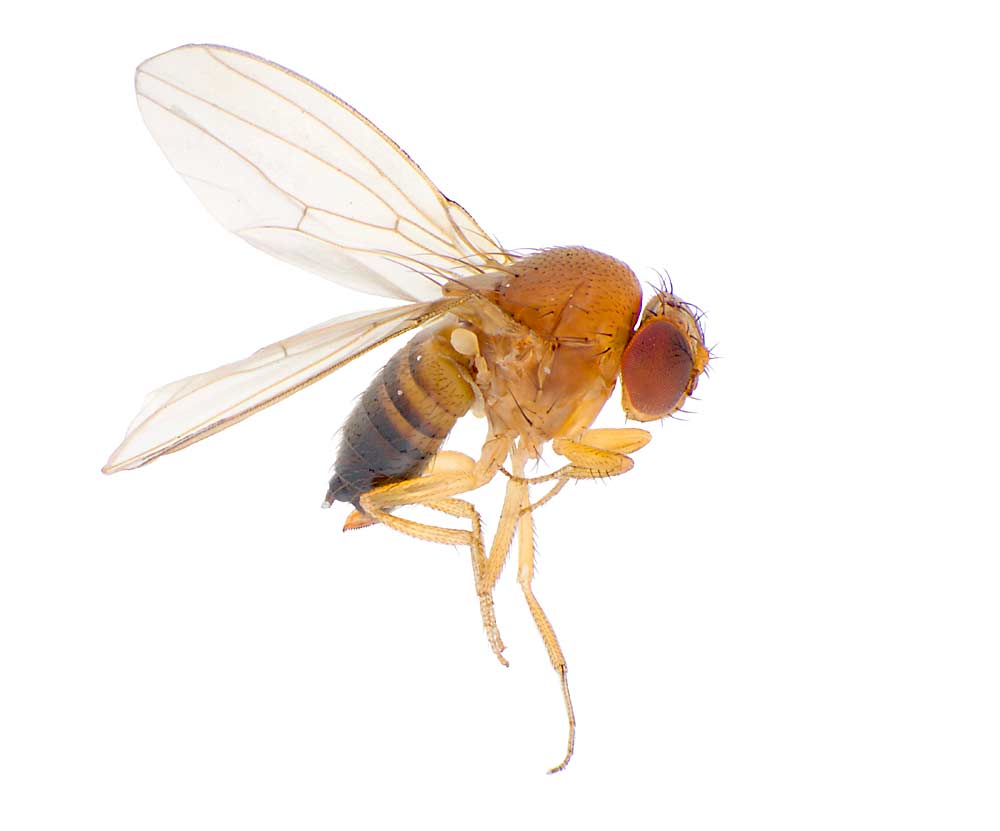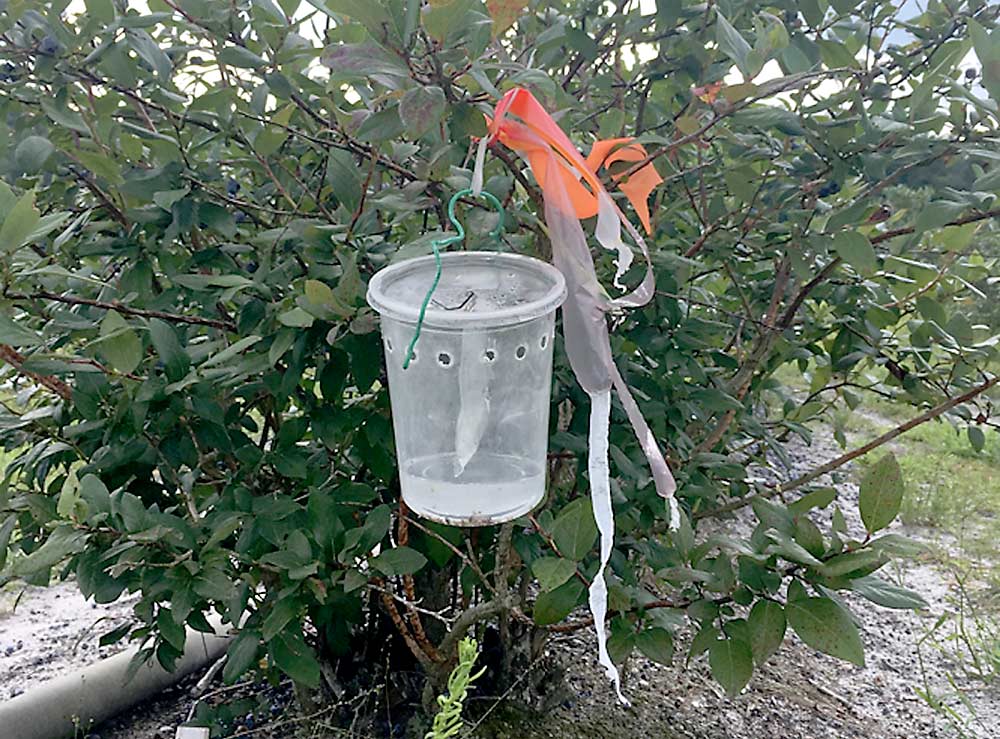
The story is the same for blueberry growers across the United States: The spotted wing drosophila first showed up about a decade ago and quickly became a key, if not the main, pest of blueberries. After the initial jolt, growers and extension educators developed reliable management strategies, but those strategies mainly involved a greater number of chemical sprays, which had been in decline until SWD arrived.
In a bid to bring chemical applications back down, extension researchers from across the country are now working together to find alternative SWD management methods. Hannah Burrack, associate professor of entomology at North Carolina State University and director of the Sustainable Spotted Wing Drosophila Management project, said the project aims to reduce reliance on pesticides as the sole means of SWD control. An additional goal is to coordinate research, extension and education efforts across multiple states.
Among other efforts, the project is seeking a U.S. Environmental Protection Agency permit to release a natural enemy of SWD, a parasitoid from Asia, across the country. It’s hoped that a mass release would put a dent in SWD’s population, said Ashfaq Sial, an associate professor and blueberry entomologist with the University of Georgia.
The project is in its last year and is seeking additional funding from the U.S. Department of Agriculture to continue. The next phase would be to translate its research findings into “economic decision aids” for growers, Burrack said.
Blueberry management
The blueberry industries in Eastern states have developed a combination of chemical and cultural controls to combat SWD.
In Michigan, one of the cultural controls is pruning blueberry bushes so sprays are better able to penetrate the canopies. Another control is weed barrier fabric, which is often laid in new fields. SWD larvae can’t survive on the surface of the black mats, which get hot, and they can’t dig into the soil to pupate. Weed barriers can’t protect the fruit itself, however, and only provide partial reduction, so growers pair the practice with insecticides when experiencing higher SWD pressure, said Rufus Isaacs, a professor and entomologist with Michigan State University.
The horticultural situation is a little different in Maine, with its large fields of wild blueberry plants, but SWD is still a problem. Maine growers have learned to escape infestation by harvesting earlier. SWD peaks in middle or late August in Maine, so growers, who used to begin harvest during the first week of August, now begin during the last week of July to avoid the SWD peak, said Lily Calderwood, an assistant professor and wild blueberry specialist with the University of Maine.
New Jersey’s blueberry harvest starts in early or mid-June and runs until mid-August. SWD, now the state’s main blueberry pest, is most active during harvest. Scouting and chemical controls are the main management methods right now, said Cesar Rodriguez-Saona, a professor and entomologist with Rutgers University.

Rutgers organizes a scouting program for the state’s blueberry growers. As harvest approaches, scouts visit farms weekly to check traps. Once they find the first SWD fly, they notify growers and recommend which chemicals to use, he said.
The main classes of insecticide used against SWD are organophosphates such as Imidan; carbamates such as Lannate; pyrethroids such as Danitol, Mustang Maxx and Hero; and spinosyns such as Delegate. Rodriguez-Saona has seen signs that flies are developing resistance, however. He’s working on alternatives to those sprays, including repellents and “attract and kill” — luring SWD and directly exposing it to an insecticide.
An attract-and-kill product, SPLAT SWD, is now available, and Rodriguez-Saona hopes growers will adopt it. He’s working with ISCA, the manufacturer, to develop best practices. He’s found that attract-and-kill products don’t work as well if pest populations are too high. It might be best to use them early in the season, when populations are low.
Georgia’s blueberry harvest runs from mid-April to the end of June. The pest is never dormant there but slows down in the hottest, driest periods. SWD flies, which can be trapped in Georgia year-round, are often found in traps after it rains, said UGA’s Sial.
Chemical control is the main management method for conventional blueberries in Georgia. Sial recommends growers put traps out when berries are close to changing color and start making weekly insecticide applications as soon as they find a fly.
Sial also studies alternative approaches such as attract-and-kill. He recommends two cultural controls: heavy canopy pruning and mulching.
In the last couple of years, NCSU’s Burrack has been encouraging North Carolina growers to use trap results to initiate their spray programs instead of spraying preventatively, in order to make fewer applications. Once they initiate spraying, they should continue on a weekly basis until harvest is over.
SWD is not the “year in, year out” pest North Carolina growers were afraid it was going to be a few years ago. The pest hits its peak in July, near the tail end of the state’s blueberry harvest. Other pests, such as blueberry maggot, are a bigger problem, Burrack said. •
—by Matt Milkovich






Leave A Comment